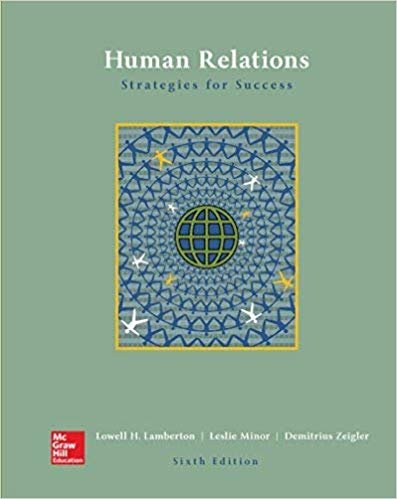Identities and Inequalities Exploring the Intersections of Race, Class, Gender, & Sexuality 3rd Edition by David Newman – Test Bank
Chapter 09
The Futures of Inequality
True / False Questions
- Institutional social problems are far too complex for an individual to have any effect on them whatsoever.
FALSE
Accessibility: Keyboard Navigation
Topic: Possibilities: Movements for Change
- Institutions, by their very nature, are quite susceptible to social change.
FALSE
Accessibility: Keyboard Navigation
Topic: Possibilities: Movements for Change
- A post-ethnic/post-racial society in which race and ethnicity no longer matters is very likely in the near future.
TRUE
Accessibility: Keyboard Navigation
Topic: Predicting Unpredictable Futures
- The ability to ignore race always reflects power and privilege.
TRUE
Accessibility: Keyboard Navigation
Topic: Predicting Unpredictable Futures
- We will soon head toward an androgynous society in which gender is a meaningless social identifier.
FALSE
Accessibility: Keyboard Navigation
Topic: Predicting Unpredictable Futures
- It’s extremely far-fetched to suggest that racial distinctions will become narrow, specific, and personally significant in the future.
FALSE
Accessibility: Keyboard Navigation
Topic: Predicting Unpredictable Futures
- What we can safely project is that 10, 20, or 50 years from now, racial and ethnic identities and the color lines that divide us will not take the form they take today.
TRUE
Accessibility: Keyboard Navigation
Topic: Predicting Unpredictable Futures
- Although family structures have changed, most jobs are still based on the assumption that an employee can and should work long hours without worrying about child care and other household needs.
TRUE
Accessibility: Keyboard Navigation
Topic: Predicting Unpredictable Futures
- Most women have moved out of traditionally female occupations.
FALSE
Accessibility: Keyboard Navigation
Topic: Predicting Unpredictable Futures
- Most of us find it difficult to see our own victimization within larger systems of inequality.
FALSE
Accessibility: Keyboard Navigation
Topic: Future Intersections
Multiple Choice Questions
- Which of the following statements is true of social movements?
A.They promote quiet bias over overt stereotyping.
B. They actively discourage gender neutralization.
C. They encourage panethnic labeling large-scale actions.
D. They are organized, collective actions.
Accessibility: Keyboard Navigation
Topic: Possibilities: Movements for Change
- Newman’s closing argument suggests that the key to undermining inequality is to recognize the multiple intersecting dimensions of privilege by first undermining:
A.dichotomous thinking.
B. legal desegregation.
C. gender neutrality.
D. affirmative action.
Accessibility: Keyboard Navigation
Topic: Future Intersections
- The continuing influx of Latino/a immigrants will virtually ensure that the:
A.elements of Latino/a culture will occupy an ever more prominent place in U.S. culture.
B. Spanish language will soon fade into nonexistence.
C. panethnic labeling of Americans becomes legal.
D. less visible positions in the government will have no room for Latino/a people.
Accessibility: Keyboard Navigation
Topic: Predicting Unpredictable Futures
- Movements for social change that tend to be most effective must successfully frame the unfairness of particular social phenomena to gain support from various segments of the population and:
A.stage highly visible sit-in campaigns.
B. bring together different groups in different structural positions.
C. make sure that people know they represent the majority.
D. make sure they are never controversial.
Accessibility: Keyboard Navigation
Topic: Possibilities: Movements for Change
- Sociologists do not often make predictions because:
A.they acknowledge the unlikelihood that their statistics are accurate.
B. making predictions leads to self-fulfilling prophecies.
C. they implicitly acknowledge the impossibility of foretelling the future with any accuracy.
D. their government funding would stop if they were wrong.
Accessibility: Keyboard Navigation
Topic: Predicting Unpredictable Futures
- Which of the following is the disadvantage of dichotomous thinking?
A.It promotes the neutralization of gender.
B. It discourages panethnic labeling.
C. It discourages the ranking of differences and inequalities.
D. It corners us into thinking about groups as opposing forces.
Accessibility: Keyboard Navigation
Topic: Future Intersections
- A “post-ethnic” society is a society in which:
A.traditional racial and ethnic definitions would become irrelevant.
B. there would be more interracial marriages.
C. prejudice would become obsolete.
D. panethnic labeling would become mandatory.
Accessibility: Keyboard Navigation
Topic: Predicting Unpredictable Futures
- A social response to current racial and ethnic definitions becoming obsolete would most likely be:
A.social confusion as people try to discover the truth of racial heritage.
B. new and different racial and ethnic definitions arising to take their place.
C. a focus on other ways of maintaining inequality.
D. the elimination of the market for skin lightening products.
Accessibility: Keyboard Navigation
Topic: Predicting Unpredictable Futures
- Which of the following statements is true of the burakumin?
A.They are biologically indistinguishable from other Japanese.
B. They are ethnically distinguishable from other Japanese people.
C. They follow a unique religion that is different from other Japanese.
D. They occupy the highest position in the Japanese social hierarchy.
Accessibility: Keyboard Navigation
Topic: Predicting Unpredictable Futures
- The “normal” American family consisting of two heterosexual parents, a breadwinner father and a stay-at-home mother, and their children currently makes up _____ of the families in the United States.
A.51%
B. less than 25%
C. 85%
D. 2%
Accessibility: Keyboard Navigation
Topic: Predicting Unpredictable Futures












Reviews
There are no reviews yet.